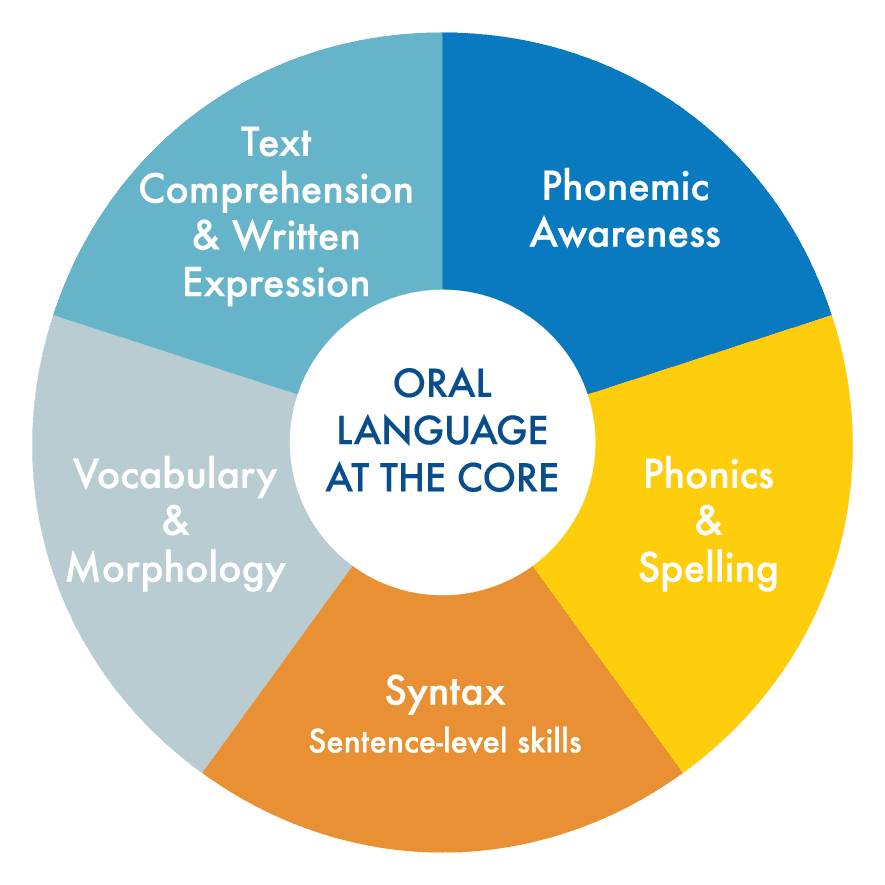
Phonemic Awareness
What is it?
Phonemic awareness (PA) is an awareness of and the ability to manipulate the individual sounds (called phonemes) in spoken words. It is a subset of phonological awareness—the ability to manipulate oral language at the level of word, rhyme, or syllable. PA is essential to the development of word recognition and ultimately automatic word reading.

Phonemic Awareness
What is it?
Phonemic awareness (PA) is an awareness of and the ability to manipulate the individual sounds (called phonemes) in spoken words. It is a subset of phonological awareness—the ability to manipulate oral language at the level of word, rhyme, or syllable. PA is essential to the development of word recognition and ultimately automatic word reading.
FREQUENTLY ASKED QUESTIONS
Why is phonemic awareness (PA) important for children who are learning to read?
- PA provides the basis for understanding that letters are represented by speech sounds, called phonemes.
- PA is one of the strongest predictors of reading success both for English speaking children and English Language Learners.
At what age is it appropriate to assess students’ phonological/phonemic awareness?
Children’s phonological awareness skills can and should be assessed before they learn to read. Assessments that measure multiple levels of the skill (i.e., syllable awareness, rhyme awareness, onset-rime awareness, and phoneme awareness) will improve early identification of at-risk children. Thus, children can participate in developmentally-appropriate interventions before they struggle learning to read.
Some of my kindergartners have trouble rhyming. What should I do? Do they need to master it before moving on?
Rhyming is not a prerequisite skill for learning to read; but take note of children who have trouble with it. This is often a ‘red flag’ for potential difficulty with reading. That said, for those students who have difficulty hearing and producing rhyming words, it’s important to move on. Teach them phonemic awareness—segmenting and blending sounds in words—which is a necessary prerequisite for reading.
Do students need phonemic awareness instruction after first grade?
Ideally PA instruction should begin in kindergarten and continue into first grade. During this time most students acquire basic phonemic awareness—segmenting and blending five sounds in words. However, students beyond first grade who continue to struggle should receive phonemic awareness instruction until they attain mastery. This should include more advanced instruction in manipulating the sounds in words—that is, tasks including addition, deletion, and substitution.
Teacher tip: Pronounce Phonemes Properly
Listen to the correct way to pronounce each of the 44 phonemes in this video and on The University of Iowa’s Sounds of Speech. For example, say /b/, not /buh/.
Teacher tip: Watch Your Mouth
Give your students mirrors so they can see the proper mouth formation for each sound. Or have them take ‘selfies’ if they have tablets.
Teacher tip: Teach PA Throughout the Day
Incorporate PA instruction for Pre-K and K into regular daily transitions, outside play, and throughout the day. For example, get your coat on if your name begins with /s/.
Teacher tip: Make Fun Phonics Phones
These easy-to-make, inexpensive phonics phones help students focus in on the sounds of their own voices.
GRAPHIC: the Stages of Phonological Awareness [PDF]
How does phonological awareness progress? Our rocket ship graphic shows how it begins with an oral language launchpad!
Tips for Principals: Enlist SLP Support
Provide teachers with support so they can accurately assess students’ phonemic awareness (PA). Some teachers may have difficulty with PA themselves. In which case, they’ll benefit from instruction and practice assessing this all-important metalinguistic skill. Enlist the expertise of your speech and language pathologist (SLP)!
Tips for Principals: assessment and progress monitoring tools
See these tools for progress monitoring and assessment for phonemic awareness.
Read More to Learn More
- Adams, M.J., et al. (1998). The elusive phoneme: Why phonemic awareness is so important and how to help children develop it. American Educator Spring/Summer, 18-29.
- Gillis, M.B. and Moats, L. (Summer 2020). Theme Editors Introduction: The role of phonology and language in learning to read. Perspectives on Language and Literacy, 46 (3), 7-9.
- Torgesen, J.K. & Mathes, P.G. (1998). What every teacher should know about phonological awareness. Florida Department of Education.
- Yopp, H.K. & Yopp, R.H. (October 2000). Supporting phonemic awareness development in the classroom. The Reading Teacher 54, 130-143.
Literacy How Professional Learning Series
The Literacy How Professional Learning Series translates the latest reading research into how-to instruction. The Knowledge to Practice book Series—Phonemic Awareness and Phonics, Syntax, Vocabulary, and Comprehension—is based on the current and comprehensive Literacy How reading model. It draws upon the authors’ decades of expertise and experience working with thousands of general and special education teachers. The Series emphasizes Pre-K-3rd grade conceptual and skill development. Teachers of older emerging or struggling readers will also find these tools useful.
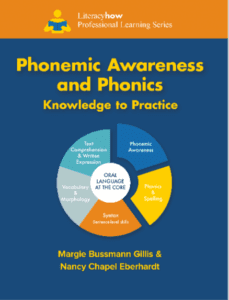
Phonemic Awareness and Phonics—the keys to breaking the code!
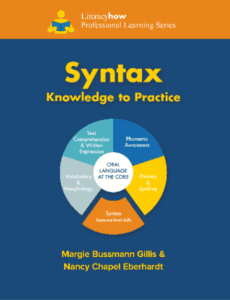
Syntax is essential—even for beginning readers!
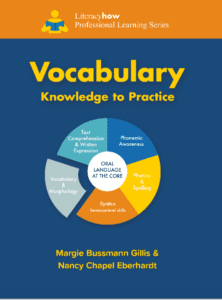
Vocabulary knowledge is essential for effective comprehension!
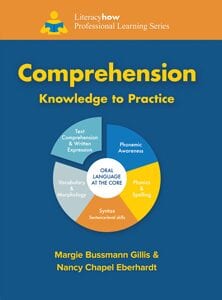
Comprehension is the goal of reading—even for beginning readers!